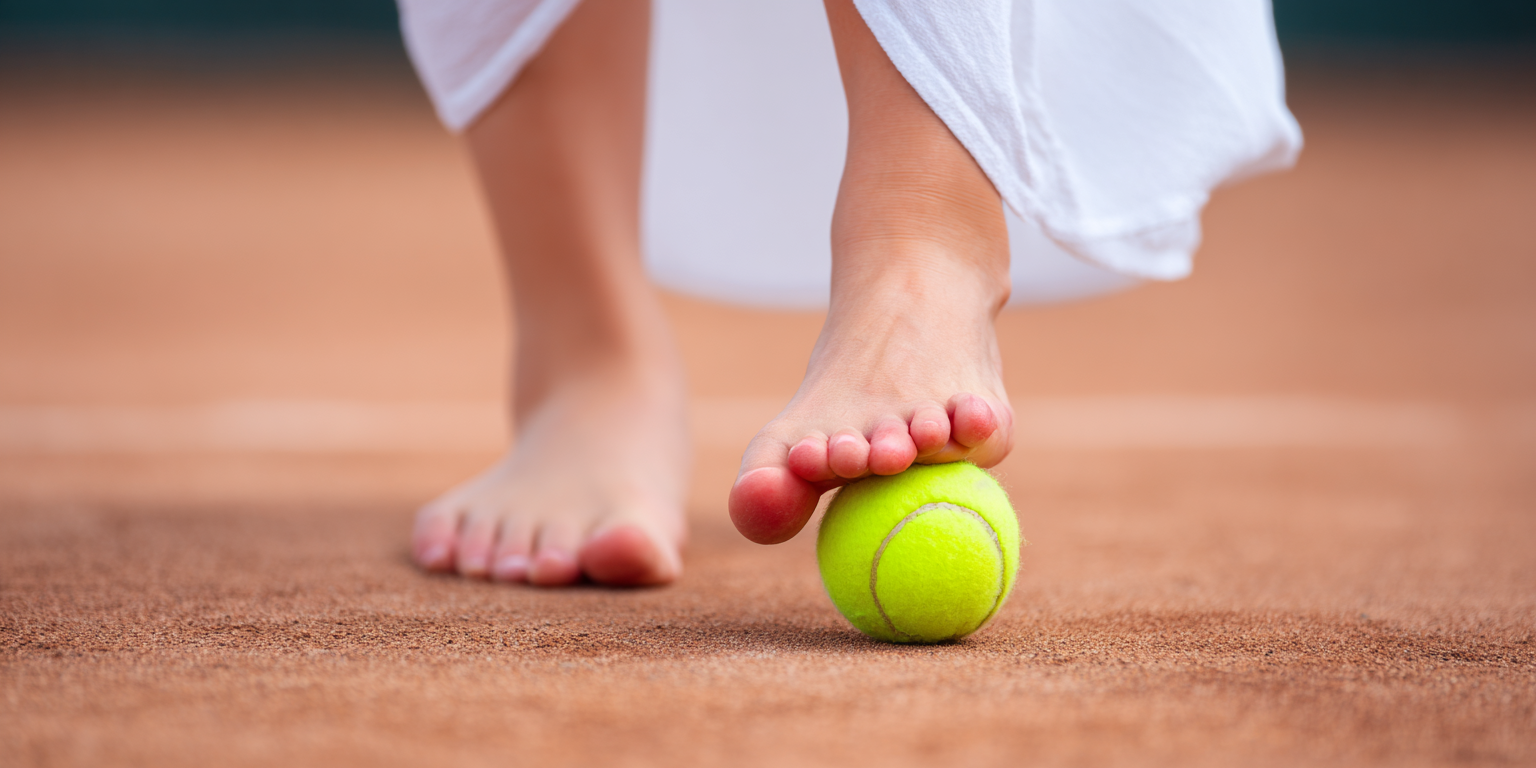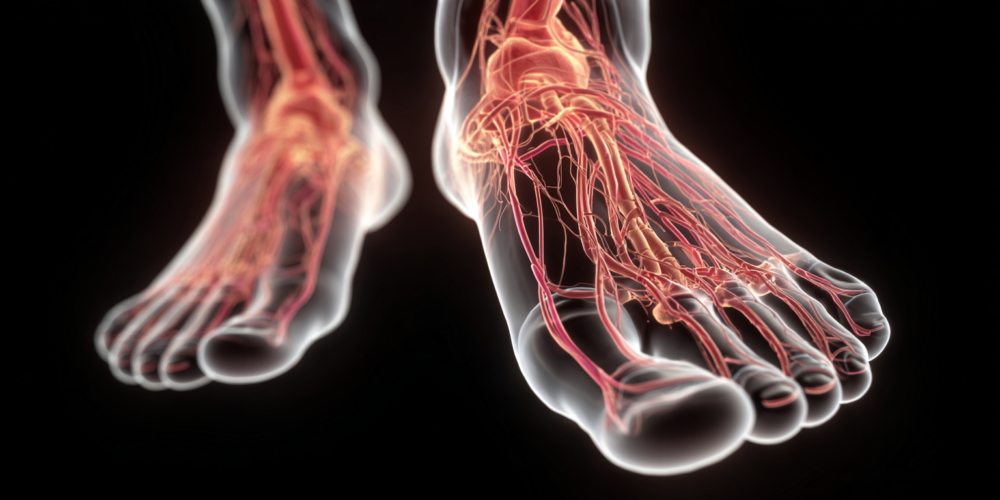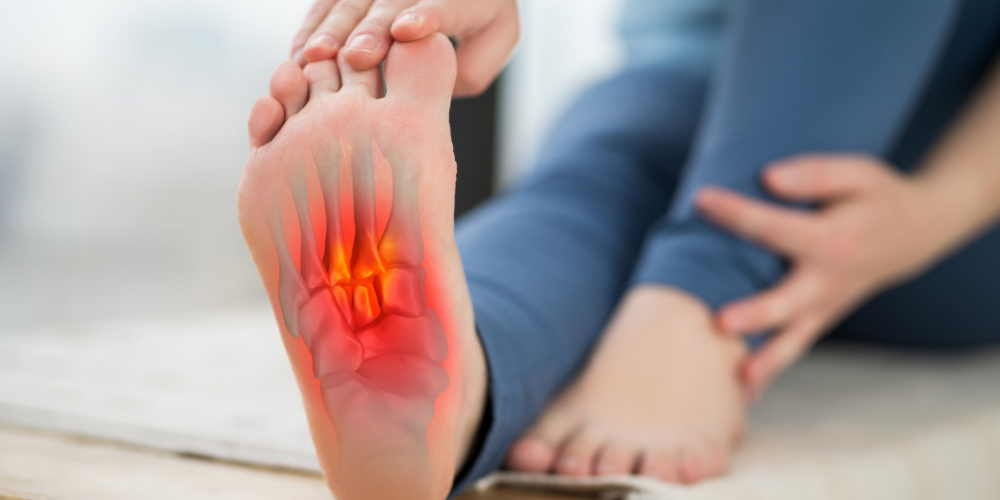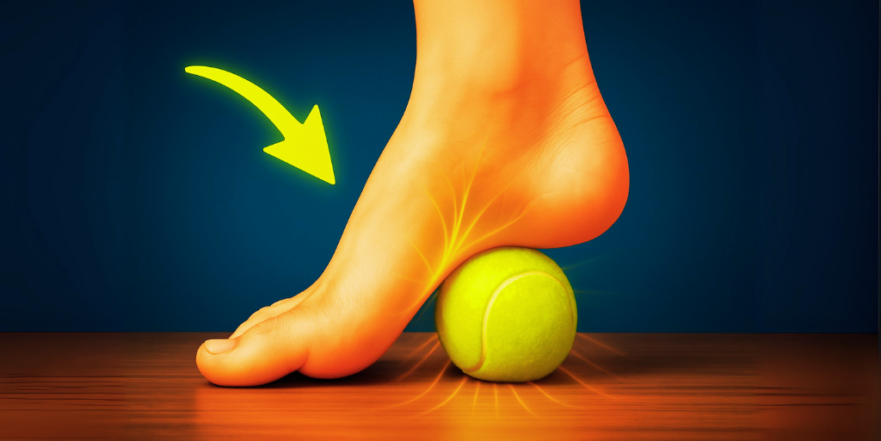
Did you know that something as simple as rolling a ball under your foot can make a huge difference in how your whole body feels? It sounds too easy to be true, right? But it’s actually one of the most effective ways to improve your nervous system, circulation, and even your energy levels. And the best part? You don’t need any fancy equipment or a gym membership. All you need is a ball and a few minutes.
This technique works because the bottom of your feet are packed with over 7,000 nerve endings. When you roll a ball under your foot, you’re stimulating these nerves, sending signals to your brain and spinal cord. This helps calm your nervous system, improves your body’s awareness of its position, and even helps with rest, recovery, and healing. It’s like a reset button for your entire body, starting right at your feet.
👉Key Takeaways
- Rolling a ball under your foot stimulates over 7,000 nerve endings.
- This improves your nervous system, circulation, and lymphatic drainage.
- It helps with conditions like plantar fasciitis, back pain, and poor posture.
- The technique calms your body, lowers stress, and can improve sleep and energy.
- It also helps release tension in the fascia, a connective tissue that runs throughout your body.
🦵Barefoot or Socks: What’s Best?

When you’re doing this foot rolling, you might wonder if you should go barefoot or keep your socks on. Honestly, either way works! If your feet are a bit sensitive or you’re just starting out, wearing socks can create a smoother glide and soften the pressure. It makes the experience more comfortable.
However, if you want to get that deeper stimulation and really connect with the fascia and nerve endings in your feet, going barefoot is the way to go. It allows for more direct contact. The most important thing is to make it feel therapeutic, not painful. You’re not trying to hurt your foot; you’re trying to wake it up and get it working better. So, choose what feels best for you.
⚙️The Science Behind Foot Rolling

So, why does rolling a ball under your foot have such a big impact? It all comes down to how our bodies are connected and how our nervous system works. The bottom of your foot is incredibly sensitive, with thousands of nerve endings. When you roll a ball there, you’re activating these nerves, sending signals up your spinal cord to your brain.
This stimulation helps regulate your nervous system. It turns on something called proprioception, which is your body’s awareness of where it is in space. Studies show that stimulating these foot nerves can actually improve your parasympathetic tone. This is the part of your nervous system that handles rest, recovery, digestion, and healing. It’s what helps you relax, lowers your blood pressure and heart rate, and can even reduce stress hormones like cortisol. Plus, it can trigger the release of endorphins, your body’s natural feel-good chemicals.
Your feet also play a huge role in your brain’s sensory cortex. A surprisingly large part of your brain is dedicated to processing sensations from your feet. So, by stimulating your feet, you’re essentially lighting up your brain, which can improve coordination, posture, and even mental clarity.
📈Understanding Fascia and Its Connection

Another key player here is fascia. You’re stimulating the plantar fascia, which is a thick band of tissue running from your heel to your toes. But it doesn’t stop there. This fascia is connected to a whole chain of tissues that runs up the back of your body – your calves, hamstrings, glutes, all the way up your spine and to your neck.
When the plantar fascia gets tight, like with plantar fasciitis, it can cause heel pain and stiffness. But because it’s all connected, this tightness can affect how you walk, put extra pressure on your knees, throw off your hip alignment, and even contribute to lower back pain. Think of your feet as the foundation of your body; if the foundation is off, everything above it has to compensate.
And it’s not just the back of your body. The fascia also continues up the front, connecting to your shin muscles, quads, hip flexors, and even your abdominal wall. So, rolling your feet can also help reduce tightness in the front of your body, improving your posture and helping you stand up straighter.
🔥Common Foot Problems This Can Help

Many people suffer from foot pain, especially plantar fasciitis. This condition often involves inflammation and tightness in the plantar fascia, leading to sharp heel pain, stiffness, and a burning sensation. It’s often made worse by improper footwear or the first few steps in the morning.
Rolling a ball under your foot can help by stretching and decompressing the fascia. It increases blood flow to the area, which can speed up healing and reduce inflammation. If you have flat feet, where your arches collapse, this can also put extra strain on your plantar fascia and weaken your ankle stabilizers. Foot rolling can help stimulate the small muscles within your foot, promoting better arch support and long-term strength.
Improper footwear – like shoes with hard soles, no arch support, or narrow toe boxes – can lead to chronic tension and shortened fascia. This simple rolling technique directly counters that by restoring mobility and helping the soft tissues in your feet. When your feet are out of alignment, your walking pattern, or gait, suffers. You start compensating with every step, which affects your knees, hips, pelvis, and spine. Foot rolling brings awareness back to the base of your body, helping you move more naturally and efficiently.
➡️How to Do the Foot Rolling Technique

Ready to give it a try? It’s super simple. You’ll want to start by sitting down. Place a tennis ball, or any firm, round object like a lacrosse ball, massage ball, or even a firm dryer ball, under your foot.
- Start Rolling: Begin by slowly rolling the ball from your heel all the way to your toes. Make sure to cover the entire sole of your foot, including the arch and the ball of your foot.
- Find Tender Spots: As you roll, you might find areas that feel tender or tight. When you find one, pause on that spot. You can apply a little more pressure or make small circles in that area for about 10-15 seconds. Remember to breathe deeply while you do this.
- Vary the Motion: You can also try rolling side to side or making small circles to help release those tight spots or trigger points in the fascia.
- Duration: Aim to spend about one to two minutes on each foot.
- Advanced Option: If you want more pressure, you can try standing up and putting your body weight onto the ball. However, for most people, sitting is perfectly fine and will still provide great benefits.
✅Who Can Benefit?

This technique is beneficial for almost everyone, but it’s especially helpful if you deal with:
- Foot pain or heel pain
- Plantar fasciitis
- Flat feet or fallen arches
- Poor foot posture
- Tight calves or Achilles issues
- Hamstring tightness
- Lower back, pelvis, or spinal tension
- Knee instability
- Neuropathies (nerve issues)
- Poor circulation
It can also improve your gait mechanics, overall mobility, and posture. By regulating your autonomic nervous system, it can lead to more energy, better sleep, and sharper mental clarity. It even helps boost blood flow back to the heart and aids lymphatic drainage, which can reduce swelling in the legs.
🔑The Foundation Principle

Remember, your feet are the foundation of your entire body. If they are weak, stiff, or neglected, the rest of your body has to compensate, often in ways you don’t even realize. By taking care of your feet through simple actions like rolling a ball, you stimulate the fascia, wake up those important nerves, and restore blood flow. This creates better balance, better alignment, and better movement throughout your whole system.
So, grab that ball, take a seat, and start rolling. Spend a few minutes each day reconnecting with your body, starting from the ground up. You might be amazed at how much better your body feels. Healing doesn’t always have to be complicated; sometimes, it starts with something as simple as your feet.
Source: Dr. Mandell

